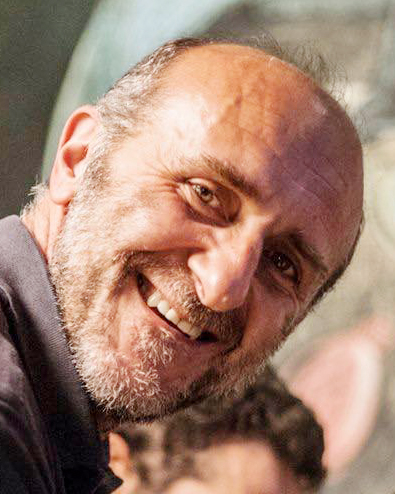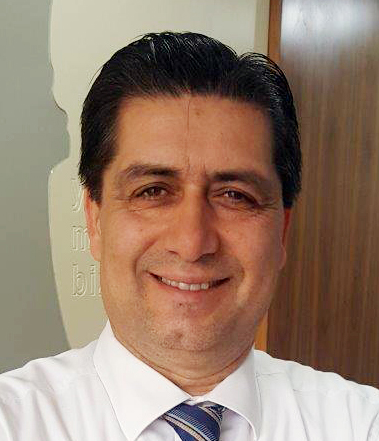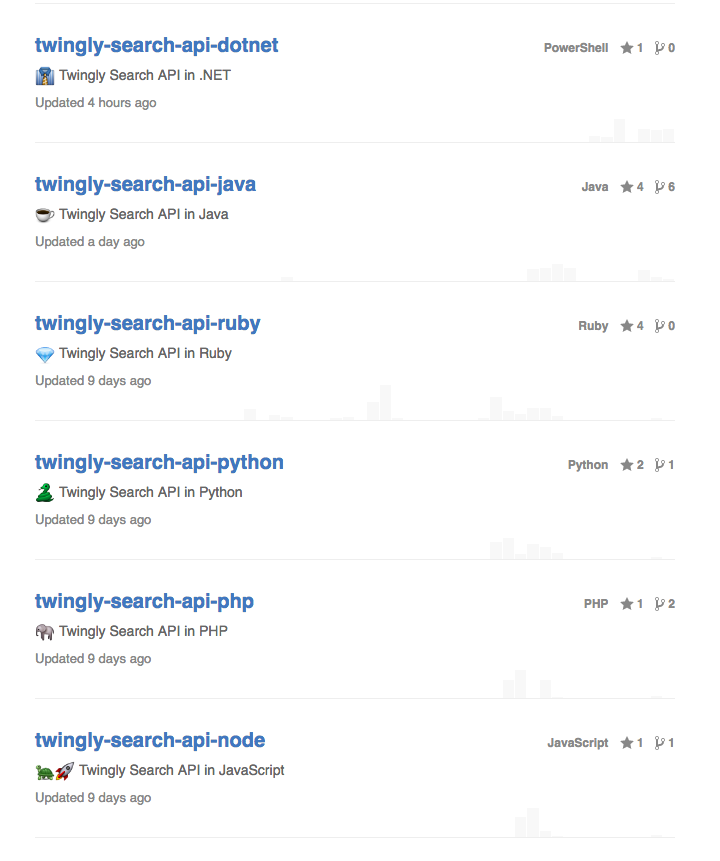
Interview with Gianandrea Facchini, CEO of Buzzdetector, a digital intelligence company in Italy
Hi Gianandrea, what is your background and what is included in your current role at Buzzdetector?
I worked in media and advertising agencies since the 1990s. In 2007, I founded Buzzdetector. My role as CEO is not only to manage the company, but try to be the engine behind the company. I try to look ahead and to get a vision of what’s going on in the market, such as new trends in our business.
I was very lucky because when I started to get into media and digital in general, I landed in a community called MarketingProfs, where I had the chance to interact with professionals such as Ann Handley, Scott Monty, and many others from all over the world. Interaction with prominent figures like them gave me an opportunity to get an early vision of the digital space, widened my vision about what’s going on in the business.
What differs Buzzdetector from other social media intelligence companies in Italy?
We are a rather small company, even if we act globally. We didn’t go for the most advanced technology from the beginning, but rather tried to specialized on decoding the information for our clients. We have our platforms and tools, and are not simply renting the platform, but renting the ability to decode and transfer all the information and insights into reports. This is the main difference; we are very experienced in providing clients with insights, and customized reports have been our key point since the beginning.
What type of companies benefit from your services?
We work mainly with multinational companies and high end clients. Since 2008, we have worked with Nestlé; we worked with Boehringer Ingelheim, a German pharmaceutical company for five years; MSC cruises at the global level since 2011; Versace; and HOMI, the most prominent trade show in Italy.
You have recently done some extensive research about the fashion industry. Why did you focus on that?
When we started thirty months ago, we were just doing a test on some tool to develop and we choose the Fashion Industry because it was the week of Pitti in Florence, but something interesting came out from this research, so we pushed on this analysis, which ended up becoming rather extensive.
We followed the most important fashion weeks (New York, London, Milan, Paris), and all the influential people and VIPs, such as celebrities around the fashion market, became very interesting for us. We collected information and categorized it in a deep way. All the materials we collected have been categorized, such as conversations, fabrics, individuals and brands, which are now in our database. The categorization took extensive work because we understood that the market was and is rather peculiar, and this was one of the markets that was most disrupted by digital. It became interesting for us to follow this market, which is why we developed The Signal. This is a pure digital intelligence project.
We are expanding this research to the movie and the music industries; in fact, we have already started to put this in place since we have the technology backbone, so we just have to fill it up with information.
What are your most important takeaways from your research about the fashion industry?
First, it’s an industry where the most relevant actors are just looking individually for their own way to face the digital disruption. Fashion brands mostly belong to associations in each of the main countries. But, nonetheless, each brand is trying to look for their own way to tackle digital; there’s nothing in common. There’s a lot of confusion, that is the main takeaway.
Second, most of the activity seems to be tactical and not coming from a real strategy. The activity comes after the creation and the unique idea of the designer for that season; the digital becomes part of the tactic to launch the collection, it’s not part of the strategic weapon of the companies.
I used to work in the fashion industry before working in advertising agencies, and I know that the creation of the collection is the main engine of the industry, which is absolutely right. Then there is no real strategy to dominate the media or a strategic approach to digital.
Third, even though we are being told that Twitter is dying or being buried, prominent individuals like celebrities and VIPs in industries like fashion, movies and music are keeping this platform alive because they have huge audiences on Twitter. Rihanna’s Twitter followers amount to double of her Instagram followers, for example. Why would she leave Twitter? She will keep it to communicate with and to sell to her audience. So, one of the main reason Twitter is still being used is because of celebrities and VIPs.
Do you have any specific plans to expand your business in the near future, like expand to new markets or develop products?
The Signal is a new product that we launched two weeks ago. We have a couple of really prominent organizations in the fashion and luxury industries testing it now.
It is a digital platform that we developed in which markets are tackled vertically and where the categorization within the market is making the difference.
For the Fashion and Luxury market we created a dataset of 75 brands, 97 fashion bloggers, 116 celebrities, 49 editors, 58 magazines, etc. We can use the data for public relations, media and celebrity strategy and competitive analysis. The main goal of The Signal is to provide companies with data sets of information that gives real insight and intelligence.
We are proud of the research we published along with Exane Paribas, one of the most important consultancy companies. We produced a piece of research which includes 36 brands in luxury and fashion, the digital environment and how they face the digital environment.
We looked for a link between the moment when collections are presented to the buyers, journalists and to the public, and the moment when people go to look for a product they saw in a collection on an e-commerce platform.
We found that hashtags used during an event, an advertising campaign die immediately after the operation and are not used as a hook to keep customers engaged with the brand. Hashtags are not used strategically to help find a product on an e-commerce platform. We ran a test and saw that the same products run in a completely different way on each e-commerce platform, with none of the descriptions having the same wording.
As a consequence it’s difficult for consumers to find products online. The e-commerce platforms are driving the search and not the brand, which is a problem. Brands are opening their own stores, but they can't maintain control of the product online as they do in the physical world.
What are your greatest challenges ahead at Buzzdetector when it comes to developing your offer?
That’s a good question; the greatest challenge is that whenever we enter into a conversation with multinational corporations, it is difficult to make them understand that it's not the size of the company that makes a difference, but the overall approach.
We are used to working with these kind of companies. It’s not just a matter of making the technology work; the most advanced monitoring platforms, with hundreds of millions invested in development, provide almost the same results as a small platform if you are good at writing the query.
The real problem is trying to get sentiment analysis that truly works; today it doesn’t work algorithmically. It can be correct 60 to 70 percent of the time when you’re really lucky, and a company can’t make a decision with a 30 percent margin for error.
Are there any social platforms that are closed today that you would be interested in tapping into for monitoring that would benefit your customers?
I would love to see Snapchat’s numbers. The most important platforms of the close future are the messaging platforms where you can’t have access, which I’m not questioning. This is the reason why we're shifting towards the digital intelligence, collecting information in conversations from the brand's point of view.
Since we can't collect conversations as we do on the open platforms, our work has to adapt to the reality of the new platforms taking the market. We as a market have to modify the way we follow conversations to adapt to the new platforms.
What kind of data or media that you do not have monitoring on today can be interesting in the future?
Photos are rather important, as well as videos. I don’t foresee any real solutions in a close timeframe on monitoring them. I’m afraid that photo and video recognition could become the new sentiment analysis of the time, with the accuracy being rather low.
Are there specific or typical needs in the Italian market for social media monitoring that you think differs from the rest of Europe or the world in general?
I see a focus on pure reputation analysis, which disturbs me. Monitoring is not just a matter of perception; social media monitoring is something strictly linked to the strategic approach of a company to the market and its audience. When you're limiting your analysis to the reputation, you are clearly doing basic work. In my opinion, in the Italian market, pure reputation analysis is still too much adopted. A lot of companies are losing information for growing and expanding their market at home and abroad.
How do you think the media monitoring and social intelligence industry will change in the next five years?
Messaging is impacting the industry because we can’t get in this as we can in other social media platforms. We have to find a way to follow the conversation, but it will be crucial to the organization to control and stimulate the conversation with the customers because they won't have any other chance to find out what customers are talking about in messages.
This is a call to action to a more proactive strategy on behalf of companies to customers. Whenever you can’t follow the conversation between individuals, the only information you will get is the one around the conversation you can stimulate for them. From a monitoring point of view, this is changing everything because you have to go through more relevant semantic analysis, which is taking the lead of what will happen in this industry in the next five years.
The social media monitoring we know today and as it would be in five or 10 years, has to be considered a highly strategic activity. It has the ability to positively impact an entire strategy, product development, sales, commercial aspects, communication aspects and logistics. Social media monitoring has the ability to impact every aspect of a corporation's life.
By Renata Ilitsky


